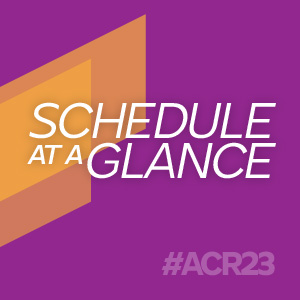Poster Session A
Vasculitis
Session: (0673–0690) Vasculitis – ANCA-Associated Poster I: Treatment Outcomes
0687: Avacopan for the Treatment of ANCA-associated Vasculitis. Real World Experience in Spain
Sunday, November 12, 2023
9:00 AM - 11:00 AM PT
Location: Poster Hall
- MC
Maria Cid, MD
Hospital Clinic Barcelona. University of Barcelona
Barcelona, SpainDisclosure information not submitted.
Abstract Poster Presenter(s)
Georgina Espigol-Frigole1, Maria C Cid2, Juliana Bordignon Draibe3, Maria Carmen Prados4, Elena Guillen5, Ana Huerta6, Javier Villacorta7, Cristina Vega8, Judith Martins9, Borja Gracia10 and Enrique Morales11, 1Autoimmune Diseases. Hospital Clinic Barcelona, Barcelona, Spain, 2Hospital Clinic Barcelona, Barcelona, Spain, 3Hospital Bellvitge, Barcelona, Spain, 4Hospital Torrecárdenas, Almeria, Spain, 5Hospital Clínic de Barcelona, Barcelona, Spain, 6Hospital Puerta de Hierro, Madrid, Spain, 7Hospital Ramón y Cajal, Madrid, Spain, 8Hospital La Paz, Madrid, Spain, 9Hospital de Getafe, Madrid, Spain, 10Hospital Lozano Blesa, Zaragoza, Spain, 11Hospital 12 de Octubre, Madrid, Spain
Background/Purpose: ANCA-associated vasculitis are chronic and relapsing diseases. Relapses are frequently associated with organ damage accrual as a consequence of disease activity or treatment-related side effects. Avacopan, a selective antagonist of C5a receptor, has been approved for the treatment of adult patients with severe and active granulomatosis with polyangiitis (GPA) or microscopic polyangiitis (MPA) in combination with rituximab (RTX) or cyclophosphamide (CF). We describe our initial experience with avacopan as part of an Early Access program in Spain.
Methods: The study population consisted of all patients diagnosed with GPA/PAM who initiated treatment with avacopan between June 2022 and March 2023 as part of the program. Patients (newly diagnosed or relapsing) were locally selected by participating investigators based on impaired renal function or long glucocorticoid exposure and toxicities. Descriptive statistics (mean and SD or median and IQR for continuous variables, and percentages for categorical variables) are presented.
Results: 24 patients were included: age 58,5±15 years, 60% women, 50% newly diagnosed and 71% ANCA- MPO+. 88% (21/24) had kidney involvement with an eGFR of 26±15 ml/min/1.73m2 (n=17). Extrarenal manifestations were present in 42% (10/24), the most common was pulmonary involvement (6/24).
In 75% of patients avacopan was initiated because of presence/risk of glucocorticoid (GC)-related adverse events (AEs) (diabetes, hypertension, osteoporosis, previous infection, frailty, cardiovascular risk and previous GC exposure). 30% had previous GC-derived AEs and 8% were on chronic GC use. In 30% of patients, avacopan was added for refractory disease and in 46% of patients for potential recovery of kidney function.
RTX was used for induction in 100% of patients and was combined with CF in 54% of cases. Moreover, 67% received methyl-prednisolone pulses, 96% oral prednisone and 25% plasma exchange. Median follow-up under avacopan treatment was 5,4 months (IQR 2,55-9,25). Remission was achieved by 79% of patients with no relapses during follow. eGFR increased 6.1±12.5 ml/min/1.73m2
Prednisone was completely discontinued in 33% of patients (after 11,3±5,9 weeks). At the time of this analysis, 40% were tapering GC. Three AEs were reported (diarrhea, urinary tract infection and neutropenia). Avacopan was discontinued in 1 patient.
Conclusion: Combination of avacopan and standard remission induction therapy had a good safety profile in real world clinical practice. Although in the presence of efficient induction therapy, short follow up and lack of comparator no conclusions can be drawn about efficacy, our patients tolerated lower GC exposure than previously adviced.
G. Espigol-Frigole: CSL Vifor, 1, GlaxoSmithKlein(GSK), 1; M. Cid: AbbVie/Abbott, 1, 2, 6, AstraZeneca, 1, GSK, 1, 2, 6, Kininksa Pharmaceutical, 5, SCL-Vifor, 2, 6; J. Bordignon Draibe: CSL Vifor, 1; M. Prados: Alexion, 2, CSL VIFOR, 2, GlaxoSmithKlein(GSK), 6; E. Guillen: CSL Vifor, 1; A. Huerta: Alexion, 2, 6, AstraZeneca, 6, CSL Vifor, 2, GlaxoSmithKlein(GSK), 6, Sanofi, 6; J. Villacorta: Fresenius, 2, Vifor, 2; C. Vega: CSL Vifor, 1; J. Martins: CSL Vifor, 1; B. Gracia: Boehringer-Ingelheim, 6, GlaxoSmithKlein(GSK), 6, Roche, 6; E. Morales: Alexion, 6, CSL Vifor, 2, 6, GlaxoSmithKlein(GSK), 2, 6, Otsuka, 6.
Background/Purpose: ANCA-associated vasculitis are chronic and relapsing diseases. Relapses are frequently associated with organ damage accrual as a consequence of disease activity or treatment-related side effects. Avacopan, a selective antagonist of C5a receptor, has been approved for the treatment of adult patients with severe and active granulomatosis with polyangiitis (GPA) or microscopic polyangiitis (MPA) in combination with rituximab (RTX) or cyclophosphamide (CF). We describe our initial experience with avacopan as part of an Early Access program in Spain.
Methods: The study population consisted of all patients diagnosed with GPA/PAM who initiated treatment with avacopan between June 2022 and March 2023 as part of the program. Patients (newly diagnosed or relapsing) were locally selected by participating investigators based on impaired renal function or long glucocorticoid exposure and toxicities. Descriptive statistics (mean and SD or median and IQR for continuous variables, and percentages for categorical variables) are presented.
Results: 24 patients were included: age 58,5±15 years, 60% women, 50% newly diagnosed and 71% ANCA- MPO+. 88% (21/24) had kidney involvement with an eGFR of 26±15 ml/min/1.73m2 (n=17). Extrarenal manifestations were present in 42% (10/24), the most common was pulmonary involvement (6/24).
In 75% of patients avacopan was initiated because of presence/risk of glucocorticoid (GC)-related adverse events (AEs) (diabetes, hypertension, osteoporosis, previous infection, frailty, cardiovascular risk and previous GC exposure). 30% had previous GC-derived AEs and 8% were on chronic GC use. In 30% of patients, avacopan was added for refractory disease and in 46% of patients for potential recovery of kidney function.
RTX was used for induction in 100% of patients and was combined with CF in 54% of cases. Moreover, 67% received methyl-prednisolone pulses, 96% oral prednisone and 25% plasma exchange. Median follow-up under avacopan treatment was 5,4 months (IQR 2,55-9,25). Remission was achieved by 79% of patients with no relapses during follow. eGFR increased 6.1±12.5 ml/min/1.73m2
Prednisone was completely discontinued in 33% of patients (after 11,3±5,9 weeks). At the time of this analysis, 40% were tapering GC. Three AEs were reported (diarrhea, urinary tract infection and neutropenia). Avacopan was discontinued in 1 patient.
Conclusion: Combination of avacopan and standard remission induction therapy had a good safety profile in real world clinical practice. Although in the presence of efficient induction therapy, short follow up and lack of comparator no conclusions can be drawn about efficacy, our patients tolerated lower GC exposure than previously adviced.
G. Espigol-Frigole: CSL Vifor, 1, GlaxoSmithKlein(GSK), 1; M. Cid: AbbVie/Abbott, 1, 2, 6, AstraZeneca, 1, GSK, 1, 2, 6, Kininksa Pharmaceutical, 5, SCL-Vifor, 2, 6; J. Bordignon Draibe: CSL Vifor, 1; M. Prados: Alexion, 2, CSL VIFOR, 2, GlaxoSmithKlein(GSK), 6; E. Guillen: CSL Vifor, 1; A. Huerta: Alexion, 2, 6, AstraZeneca, 6, CSL Vifor, 2, GlaxoSmithKlein(GSK), 6, Sanofi, 6; J. Villacorta: Fresenius, 2, Vifor, 2; C. Vega: CSL Vifor, 1; J. Martins: CSL Vifor, 1; B. Gracia: Boehringer-Ingelheim, 6, GlaxoSmithKlein(GSK), 6, Roche, 6; E. Morales: Alexion, 6, CSL Vifor, 2, 6, GlaxoSmithKlein(GSK), 2, 6, Otsuka, 6.



